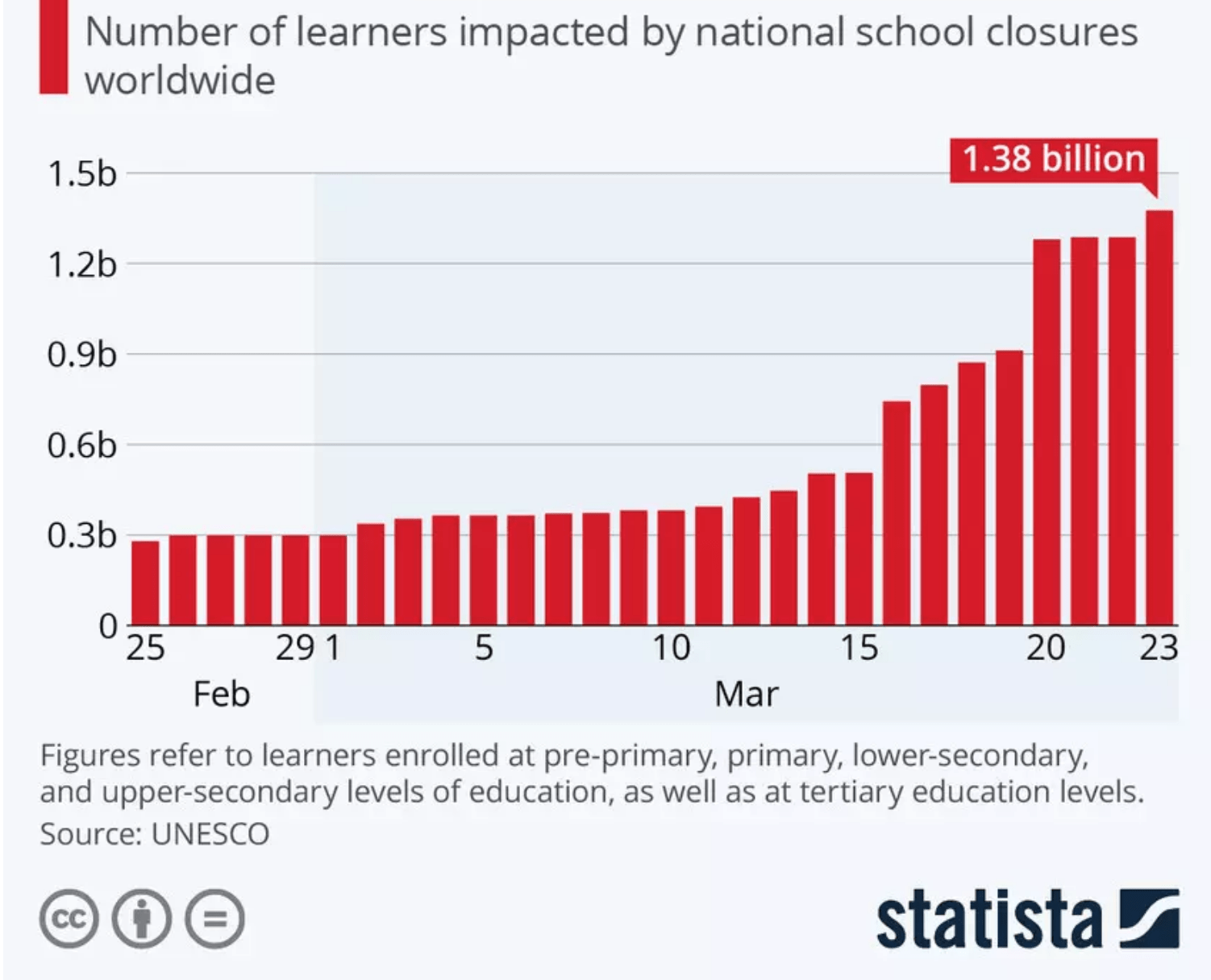After decades of hard work to get kids into primary schools, the COVID-19 pandemic has now pushed education back to “global levels not seen since the 1980s,” the UN Development Programme (UNDP) said in a new report last week. One the solution, the agency says, could be more equitable internet access.
Well over a billion students around the world are facing indefinite school and university closures that have been implemented to stem the spread of COVID-19, according to the UN Educational, Scientific and Cultural Organization (UNESCO) and the World Bank. But some of these students are still getting an education thanks to new technologies, like the internet. To get a more accurate assessment, the UNDP report, COVID-19 and Human Development, accounted for households without access to internet, under the assumption that every child with internet access can continue to learn. The result is what they call an “effective out-of-school rate” of 60 percent of primary school-age children who are not getting an education right now because of the pandemic.
Assuming that schools only stay closed for a quarter of the academic year, the annualized rate would still be 20 percent over the course of the year. This is a dramatic jump from the 9 percent that UNESCO has reported over the last decade (not reflecting households without internet) and reverses the progress we’ve made back to the out-of-school rates in 1985.
Yet, this is “an optimistic estimate of the social ability to keep children in school,” the report says, as well as “an optimistic estimate of inequalities between country groups.” According to the UNDP, the effective out-of-school rate for primary education has increased substantially everywhere, but it is highest in low human-development countries, where the rate on average 86 percent (an increase of 59 percentage points). Human development is measured as a combination of education, health and income.
In medium human-development countries, the effective out-of-school rate is 74 percent (an increase of 67 percentage points) and in high human-development countries, it’s 47 percent (an increase of 41 percentage points). Unsurprisingly, very high human-development countries are seeing the least impact, with the majority of 6- to 11-year-olds still able to participate in some form of structured learning. In these countries, the effective out-of-school rate increased from 1 percent to 20 percent.
This is the largest reversal of school enrollment in history, the report says, and it will likely have long-term impacts on overall development, which could decline this year for the first time since human development was introduced as a concept in 1990.


Image: Statista
“The world has seen many crises over the past 30 years, including the Global Financial Crisis of 2007-09. Each has hit human development hard but, overall, development gains accrued globally year-on-year,” UNDP Administrator Achim Steiner said in a press release. “COVID-19 – with its triple hit to health, education, and income – may change this trend.”
However, the report says that internet access can make a big difference. If all countries in a human development group (low, medium, high or very high), have the same internet access rate as the best performers in their group, the effective out-of-school rate this year would drop from 20 percent to 12 percent. In contrast, a scenario in which no one has internet access for two to three months would bump the effective out-of-school rate up to 29 percent – a 50-year reversal of progress toward universal primary education.
The report notes that not only would internet access provide students the capability to engage in structured learning (assuming, of course, that internet access equals access to a device and to online learning), but it would also enable more people to access tele-health services and to work from home. And, closing the gap in internet access for low- and middle-income countries would only cost 1 percent of the amount of money the world has committed so far to respond to COVID-19.
Of course, providing more equal access to the internet isn’t a cure-all for all of the human development consequences of the pandemic. For example, in many countries, even in parts of the U.S., schools are not only critical for learning, but also for providing children their most nutritious meal of the day. Internet access can’t stand in for school feeding programs, but the report makes the case that it can empower children and families with the ability to adopt measures that will help them deal with the educational, health and financial repercussions of this crisis and others.
